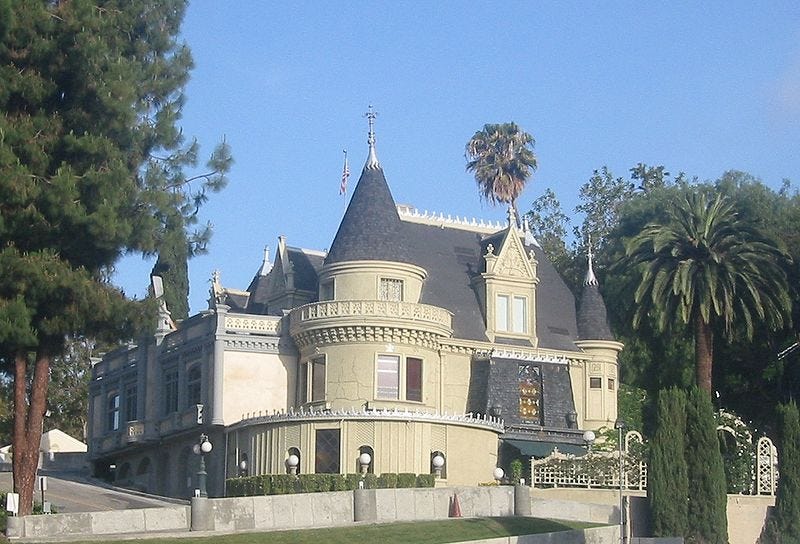Sharp-eyed readers might notice this week’s title is not original. It is stolen from an open letter Steve Jobs addressed to Adobe in 2010. In it, Jobs railed against Adobe’s Flash player, which used to run a lot of the video on the internet (and was, as Jobs claimed and others have come to corroborate, garbage on mobile phones and not appropriate for the kind of content-heavy internet we have today). I reference it (and the incident stays on my mind nearly 14 years later) as it strikes me as high comedy. Jobs wanted to “jot down” some of his thoughts about why a supremely popular architecture/application was wrong and we should all stop using it. The casual posture he adopted for the undertaking is absurd. The audience was meant to believe he woke up, wrote this on the back of a digital cocktail napkin, and just put it out that way (pay no attention to Apple’s glaring self-interest and the billions of dollars at stake behind the curtain). Such was his terrible power (and just as often, hypocrisy). His biographer Walter Isaacson called this trait of Jobs a “reality distortion field,” but he could have just as easily been described as an illusionist. He would deign to show the world something unbelievable, and people often bought the trick.1
//
I. The Good Gift of Bad Art
Consignment and other second hand stores are a delight for the discerning art shopper. Sane and intelligent people peruse these sections looking for really good frames at unbeatable prices (and any middlebrow or questionable art pieces within the frames are to be discarded). For the more depraved art buyer, these strange and evocative pieces can be acquired for your home’s weirdest room, or presented as a perfect gag gift for friends and loved ones. Here is one from my home, autographed by my friend Cameron, who gave me this as a gift (and jumped me into this horrible tradition):
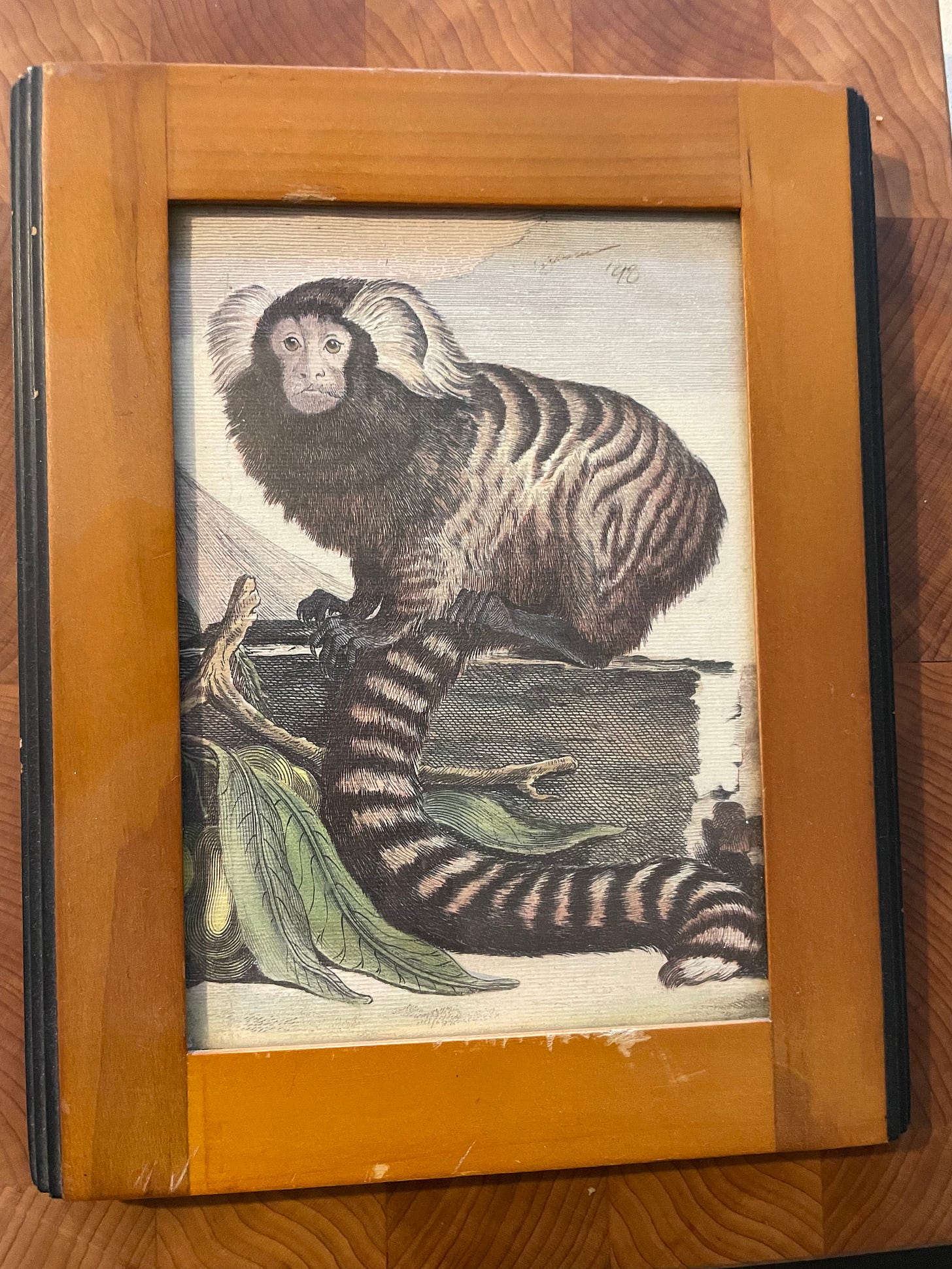
I have since given him a few terrible art pieces in return; mostly of animals in a similar style (Western scenes with men on horseback shooting at buffalo, a particularly awful Audubon watercolor of a “wolverine,” which I’ve included here, etc.).

II. Magic, Man.
On June 12, 2014, I was browsing the art section at a Goodwill when I was stopped dead in my tracks by a framed promotional poster. It was a portrait of a magician in a suit and top hat, his hands posed in a dramatic flourish, which the poster announced (screaming in its emblazoned yellow letters) as:
T H E A M A Z I N G M E P H I S T O

Reeling under the powerful gaze of this magic man, I subsequently passed out. Some time later, I discovered a lone photograph of just his face on my phone. I did not take this photo and have no memory that can explain its presence, but it serves as a frequent and useful reminder of the hidden and otherworldly powers of magic. And with that retelling, The Amazing Mephisto now belongs to the ages. Please check your photo library and see if he has appeared there.
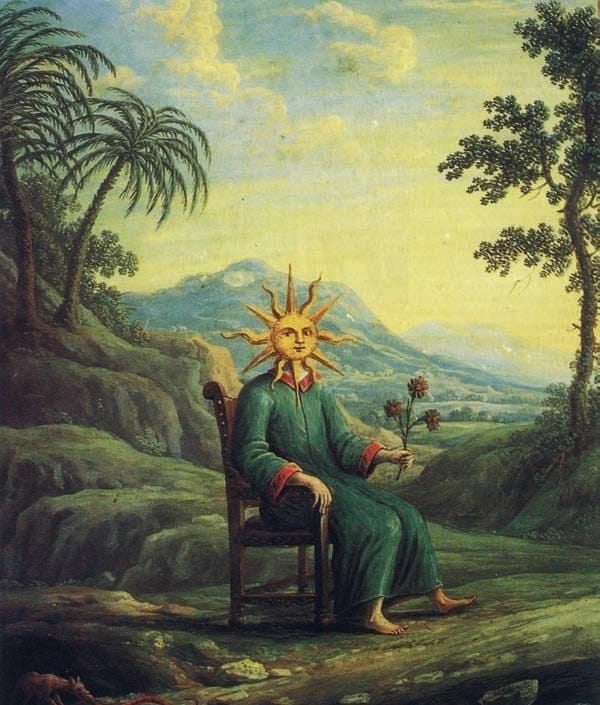
The above account is not true of course, except that I do regret not buying The Amazing Mephisto and so I have to tell people about it from time to time (the joke gains a new dimension if you play around with pronunciation—was it “Meh-FIST-o” or was it “Meh-Feast-o”? The second version is funnier to me).
All of this pre(r)amble to say that this piece of art is the one that got away. It’s true that I also photographed only his face for some reason. The close up was probably funny and I sent it to someone, but I regret not capturing the whole piece on film for posterity (if I wasn’t going to buy it, the least I could have done was photograph it properly). I’ve tried looking around on the internet to see if this man was a real magician and whether he was of any renown, but that’s the kind of cool/good/analog information the internet is no longer capable of displaying to searchers in any meaningful way.2
Sometimes it’s all better left as a mystery.
III. The Academy of Magical Arts
This brings me to one of my favorite, and deeply analog, experiences: an evening at The Magic Castle in Hollywood. After a few years away, I was lucky enough to finally get back to this (mostly invite-only) venue for an evening of dinner, magic and a certain reckless style of holiday drinking. For those who are not in the know, this is a supper and entertainment club for magicians (and their invited guests) to experience many different kinds of magic (stage shows, close up, etc.).
I first visited The Magic Castle when I was 9 (Lockheed Martin would have events there for employees and their families, so thank you dad). I loved it, and I had a t-shirt from one of those trips that I wore long into high school. Visiting it when you’ve reached legal drinking age is a further revelation.

What I love about this venue is all of the things that don’t change. First and foremost is the decor, including framed photos of magicians along the walls who sometimes look like 80s Yacht Club Commodores (picture the classic Magician suit, but with Cheney/Rumsfeld/Powell glasses). The club is inside a 100+ year old Victorian home (1908), with sprawling and alternately cramped passages (basement and attic included). The place actually caught fire after midnight on Halloween in 2011, but thankfully the building (and guests) survived.3 The exits are clearly labeled, because everyone is going to burn to death in this labyrinth if they aren’t, but otherwise you feel completely lost in the experience. Making it to all of the bars in the venue in one evening is difficult (Jess and I failed in our most recent attempt), and the notion that something cool is happening in a room you don’t know about is palpable (it gives off a real world Westworld vibe in that sense). It’s like all the best parts of Disneyland (atmospheric storytelling, classic Americana, a focus on entertainment), but indescribably improved by the replacement of Disney-loving adult patrons (always an improvement, please know that no great offense intended, reader) with a perfect Venn diagram of the beautiful people (certain Los Angeles venues have a surfeit of them) and the eccentricities of the magician members (The Teardown readers will also be relieved to hear club members wear lapel pins).

The Magic Castle is, simply put, a very good time. This vintage poster below captures some of the energy. You are wandering around with an Old Fashioned and it wouldn’t feel strange to have a homunculus or demon show up at your elbow with their own drink and ask you what you thought of the last show. The art of Shag also captures some of this vibe (it’s no coincidence he’s done a print of The Magic Castle, which seems a natural subject matter for him).
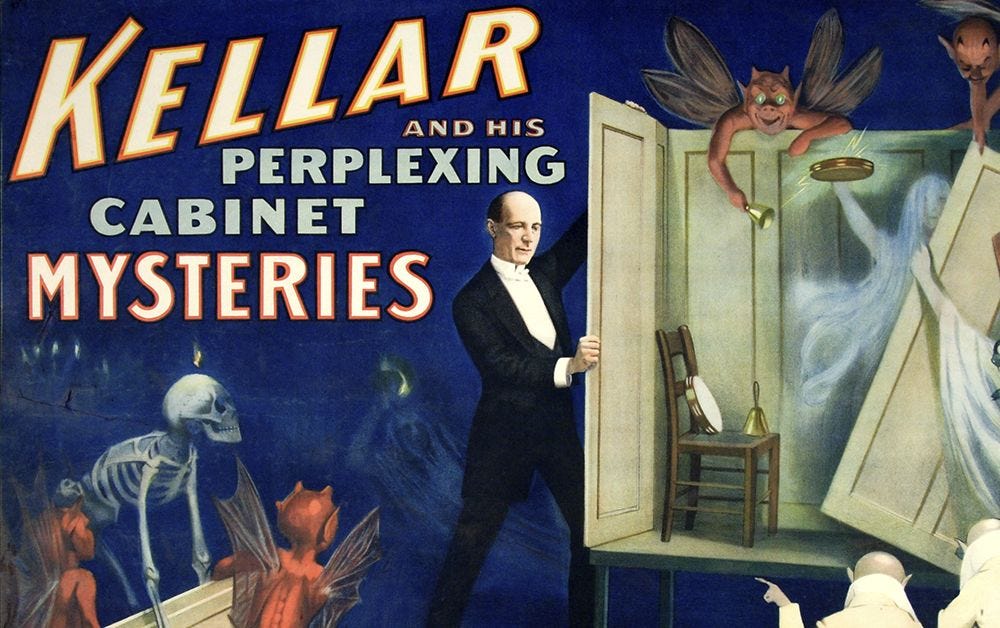
A quick aside about magic and whether or not it is cool. This is deeply subjective of course, but I’m ready and willing to concede that it is not. Arrested Development has done a lot with the character of Gob Bluth and The Magic Castle-inspired Gothic Castle to highlight how much of the illusionist way of life comes across as annoying and unwanted to normal people. In spite of all this, I non-ironically love magic, and I’m a big subscriber to Penn and Teller’s theory (discussed below) that tricks become better when you tell the audience how you are doing it.4
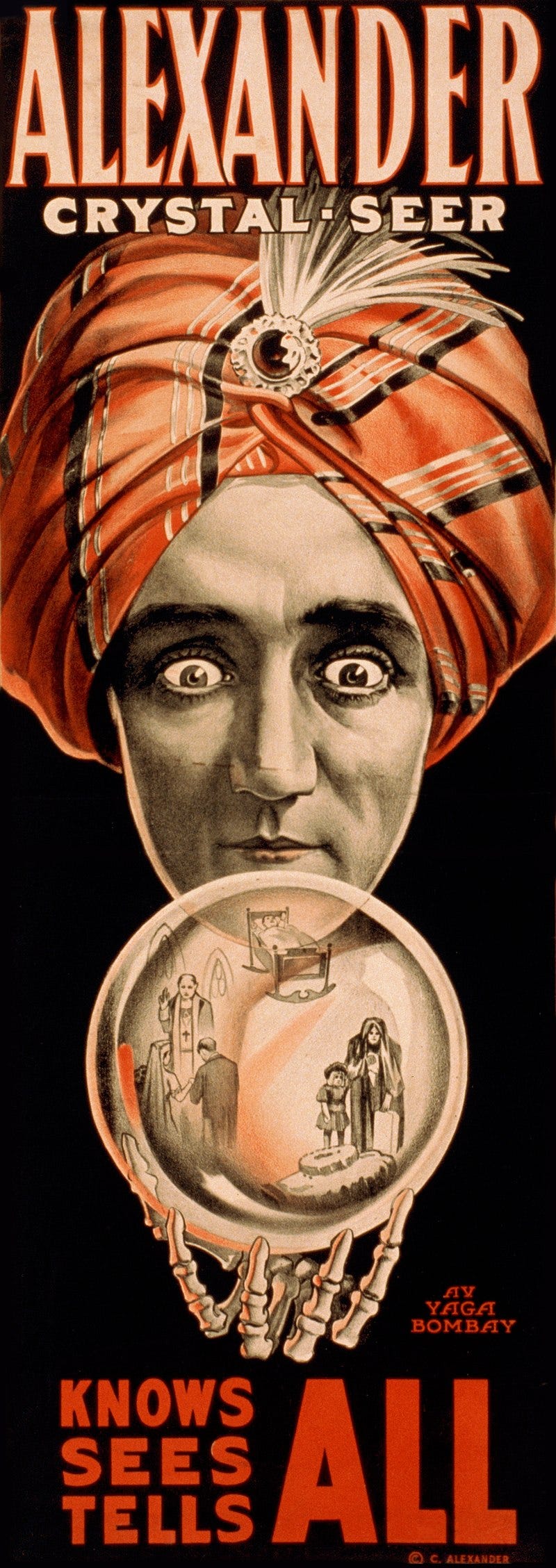
The thing making this all work is not that we’re in Hollywood (many of its more famous attractions are notorious for being garbage), or that it’s a members only club with decades of history (we can all think of a few of those that aren’t looking so hot at the end of 2023). It’s the dress code.

This dress code, and the actual elegance it creates inside the club, is exceedingly uncommon, maybe even singular. I wore a midnight blue linen tuxedo (think it’s a Brooks Brothers number with cloth/make from Larusmiani), cream colored shirt, with a straight, black knit tie, and some black velvet slippers. I don’t mention this because I think I did a particularly good job (I didn’t), but I want to highlight that I wore a tuxedo to dinner/drinks, and it wasn’t for a wedding. It feels good and we need more of it.
It’s the magicians and some of the more outrè patrons who further elevate the proceedings. There’s plenty of mere mortals in boring business suits (although better fitted and accessorized than you’ll find most places), but if you pay attention you’ll also find the following mixed in: a bolo tie? Yes. A dress with tons of leather fringes trailing off the bottom of it? Yes. Aviator glasses in cheetah frames with a matching vest? Yes. Ball gowns? Yes.
Fezes (maybe, this is a guess of mine), berets, crushed velvet, braces, scarves indoors, hats indoors (!). All of it. Think less first year investment banker and more surrealist ball. As I said, rare and unique, especially in Los Angeles.
These styles are what Permanent Style founder Simon Crompton would probably call “flash,” but there’s a good mix of “fuddy” in there too.5 I’m also reminded of David Coggins, writing about the pitfalls of dressing when you are not on your “home turf” (you can definitely feels this way at certain clubs, especially if you’re sockless or doing something else risky). It’s all good advice and a lot of it feels applicable to this sort of event, but the frivolity of the venue lets you do just a little bit more. That’s a real cause for celebration.
IV. Artful Disclosure
NPR’s This American Life has an episode about magic that I love. First, it turns out two NPR reporters were childhood magicians (including Ira Glass, which is not a great surprise). Second, the episode spends a good amount of time with Penn and Teller, discussing how revealing the secret to a trick makes it better (and is the higher form of artistry). Teller discusses the preparation that went into reviving a famous (and nearly lost) trick of a floating/controllable ball.
Teller loved the trick and Penn did not. In trying to make it work, they relayed a conversation they had about it to Ira Glass:
Penn
And I don't know which one of us brought it up. I think I'm the one who said, what if we actually said-- I said, you know, when Mike Close and Johnny Thompson came and watched me do this trick--
Ira Glass
[These are two other magicians they admire.]
Teller
--they knew there was a thread there. And because they knew there was a thread there, they were more baffled than an audience that could imagine that this was being done with a little gyroscope inside the ball. So I said, what if we say right out at the top, here's a trick that's done with a piece of thread and a special backdrop. And Penn said, I think all you need is, now here's a trick that's done with a piece of thread.
That gives them so much. It brings them over onto our side. And suddenly, this now had an idea. And the idea was bigger than the little plot with the little ball. It was bigger than all the little magic tricks. It was that you can state the actual method of a magic trick clearly at the beginning of it, and it can still fool the hell out of people. That by knowing this extra piece of information, the trick becomes better.
The video of the act in question is linked below. When asked why Teller didn’t show it to Penn in a rough form (before spending 11 months of his time perfecting it), Teller responded: “[m]agic is an on/off switch. It either it looks like a miracle, or it’s stupid.” I can confirm The Magic Castle, with its performers and patrons, looks like a miracle. If you get the opportunity to see how this trick is done firsthand, go do it.
Another trick was forcing record labels to accept a $0.99 flat per song pricing strategy for iTunes—great for all of us at the time, horrible for labels and artists. This was an early harbinger of the streaming era, where artists receive essentially no revenue from internet play of their songs.
But thank God it doesn’t all still run on flash (RIP, 1996-2021). Nice article out from NYT today explaining that the internet no longer belongs to millennials. We are now as confused and annoyed by it as our older cohorts. Max Read uses the term “enjunkification” when discussing the decay of the internet (possibly to please NYT editors), but the real term is the more apt “enshittification” when discussing the modern internet. I also feel this way about the Apple ecosystem in general—I’ve never wanted out of it before this year. Today, I have several Apple glass rectangles of varying sizes, all of which talk to each other in increasingly bizarre, unpredictable and Byzantine ways.
This quote from Los Angeles Fire Captain Jim Moore says it better than I can: “‘It’s compartmentalized in miniature dining rooms that you could imagine would be found in a haunted mansion,’” Moore said. “‘It creates the ambience that the Magic Castle is so famous for, but a fire can spread in hidden spaces and through multiple walls. It’s no ordinary house.’”
I’m not a wrestling fan, but I also think wrestling easily qualifies as good entertainment under the same reasoning. Needing it to be real seems like a less true way to belong to the fandom—the greater mode is loving it because it’s not real (and no less impressive because of it).



